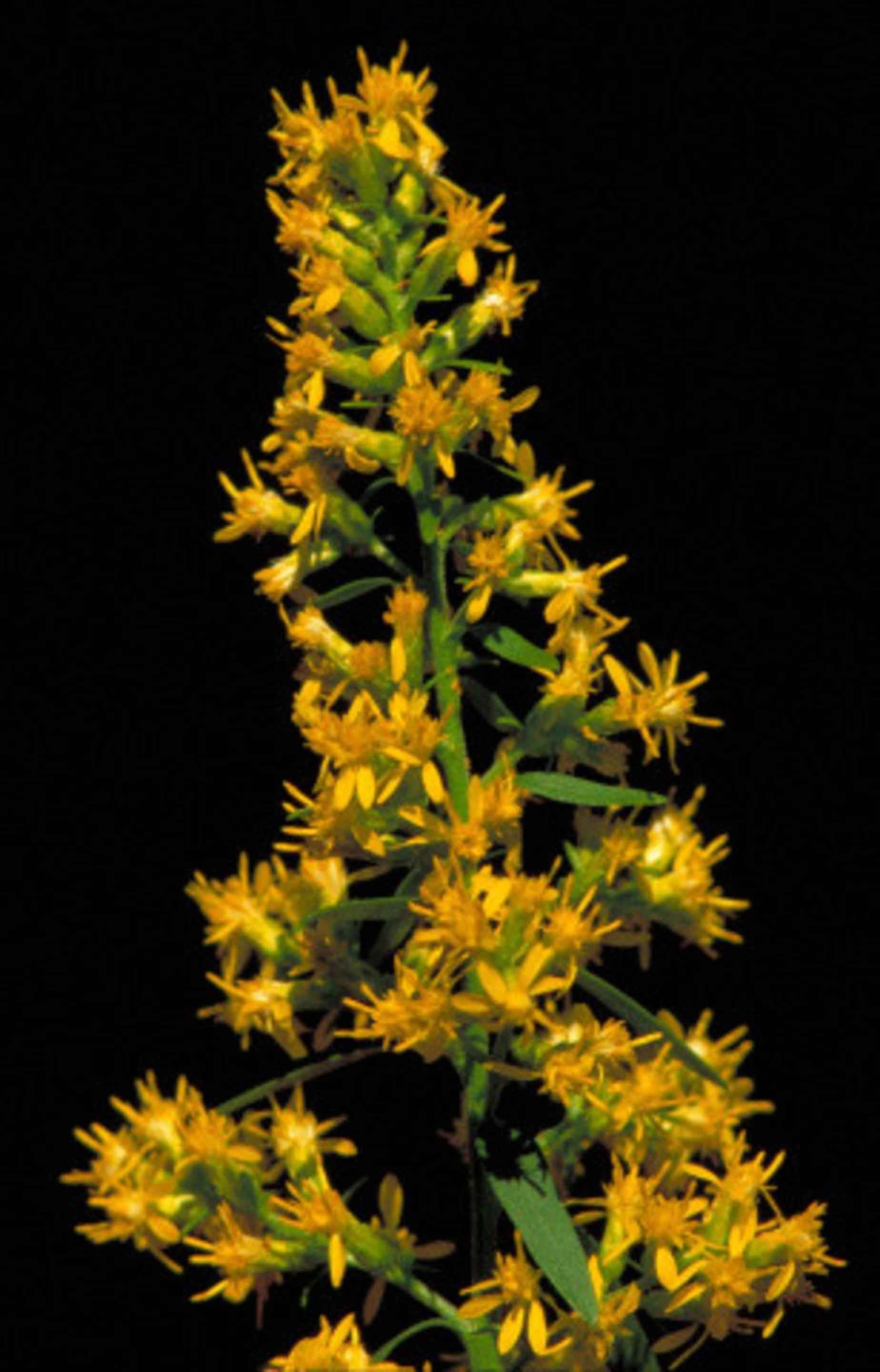
The Lady Slipper newsletter of the Kentucky Native Plant Society has been published since the Society’s founding in 1986. This is one of a series of reprints from past issues. This article, about one of Kentucky’s loveliest goldenrods, first appeared in the spring of 2005, Vol. 20, No. 1. If you would like to see other past issues, visit the Lady Slipper Archives, where all issues from Vol. 1, No. 1, February 1986 to Vol. 34, No. 1, Winter/Spring 2019 (after which we moved to this blog format) can be found.
The author, Mary Carol Cooper, left a huge legacy to the native plant community when she passed in 2016. In almost every native plant gathering, her name is mentioned and a moment is given over to appreciate her knowledge, which she freely shared. Her passion led many of us to our love of natives; she was a mentor and friend to many of us.
2005 Wildflower of the Year
SHOWY GOLDENROD (Solidago speciosa)
By Mary Carol Cooper
Salato Native Plant Program Coordinator
Salato Wildlife Education Center

Wildflower enthusiasts from all across the state have selected Showy Goldenrod (Solidago speciosa) as the Salato Native Plant Program’s Wildflower of the Year for 2005. The Wildflower of the Year is chosen based on the number of nominations it receives and how well it fits the established criteria; must be native to Kentucky, common and widespread across the state, seeds must be readily available, must be easy to grow, and must have good wildlife value.
Showy Goldenrod is a hardy perennial that grows 2 to 6 feet tall, depending on where it is planted. It is a rather showy species with stout, smooth, reddish stems and smooth, deep green leaves that are 4 to 10 inches and not toothed. It grows in rich thickets, woodland openings, fields, and prairies. It likes average to well drained soil and grows in sun to partial sun. It has dense upright pyramidal flower clusters. Each flower head has 6 to 8 rays. Showy Goldenrod blooms in late in the summer (August to September) and is wonderful as a late summer nectaring source for bees, butterflies and hummingbirds. It also provides food for several species of songbirds such as the Goldfinch, Junco, Pine Siskin, Song and Tree Sparrows.
Goldenrods are insect pollinated and their pollen is heavy and sticky. Therefore their pollen is never in the wind, so contrary to popular belief, this is not the plant that has always been blamed for causing hay fever. It is ragweed that causes all the misery! Ragweed blooms at the same time and is wind pollinated. I’ve enjoyed watching more and more floral designers use goldenrods in their arrangements and wonder how many people are aware that their lovely bouquet is full of the “dreaded goldenrod”.
Goldenrod is truly a North American flower. There are approximately 125 species in North America and more than 30 of these are native to Kentucky. Since the State Flower is Solidago ssp. this must mean that we have 30 State Flowers! Two of out native goldenrods, White-Haired Goldenrod and Short’s Goldenrod are on the Federally endangered species list.
Showy Goldenrod makes a nice background or midground plant in a sunny perennial garden. Establish this plant at the very rear of the garden or in the very middle of a circular or oval garden. Allow 3 feet between plants as this species grows into large clumps very fast. They can be divided every year or so and given to friends and neighbors. Nice companion plants are Ironweed, Great Blue Lobelia and New England Aster. Plants naturalize quickly on dry sunny banks. The cuttings are outstanding in arrangements.
The genus name Solidago comes from the Latin word that means “to make whole” or “to heal”, a name chosen because of medicinal power the plant was believed to have. The Native Americans used this plant for many things including ridding people from pain and evil spirits. One Goldenrod superstition says that he who carries the plant will find treasure, therefore, Goldenrod is the symbol for treasure and good fortune.
Goldenrod seeds and plants are available from many native plant nurseries. It is also very easy to propagate either by seeds, or division. Sow seeds thickly in outdoor seedbeds early in the fall or sow stored seed later in a flat indoors or in a cold frame. Transplant when there are 3 to 4 leaves. When the roots fill the pot, transplant in the garden after the last frost date. Collect seeds in late September or October. Cut off seed heads and put them upside down in a large paper bag. Let them dry for up to a week and then shake them in the bag and put the seeds in a sealed container.
